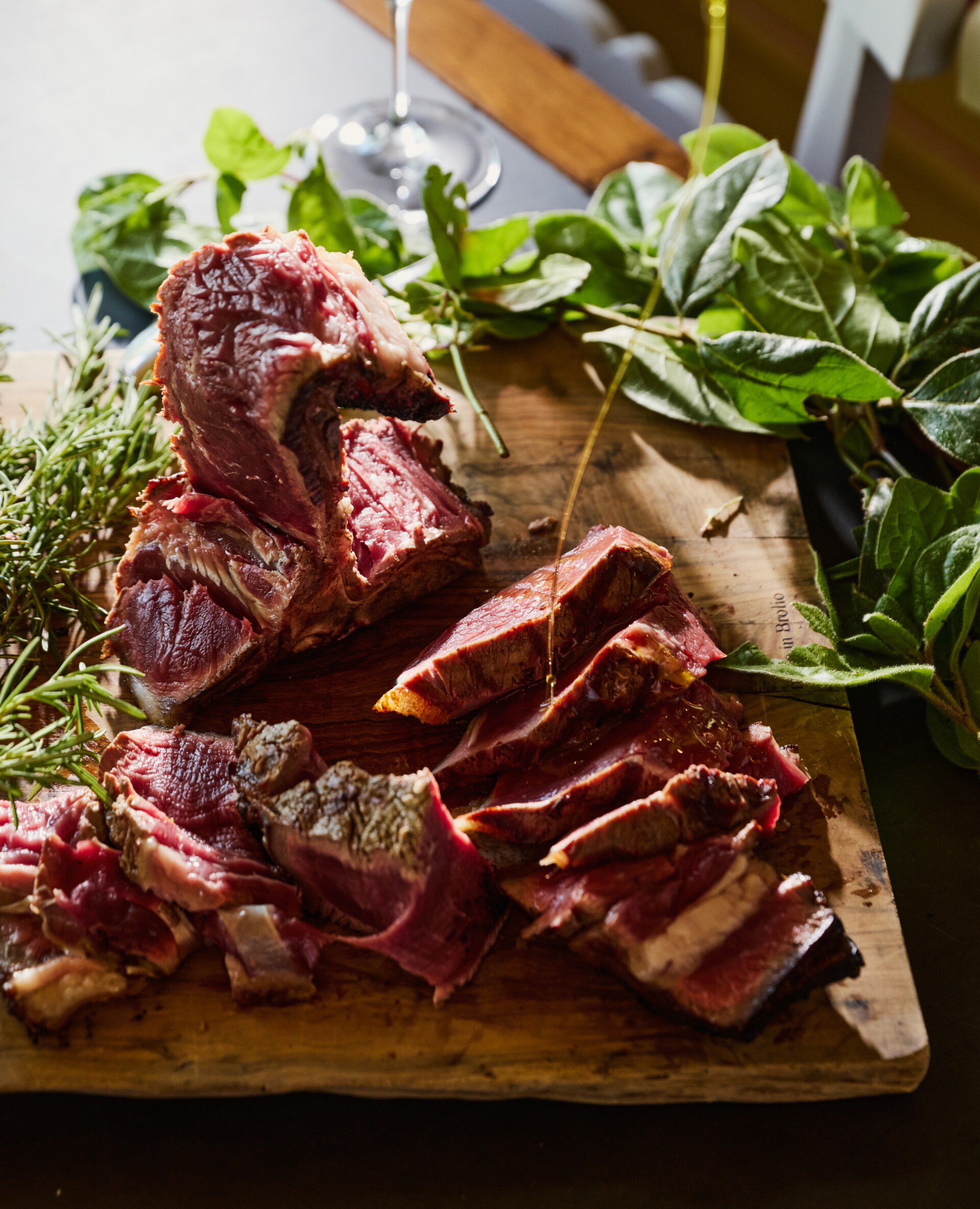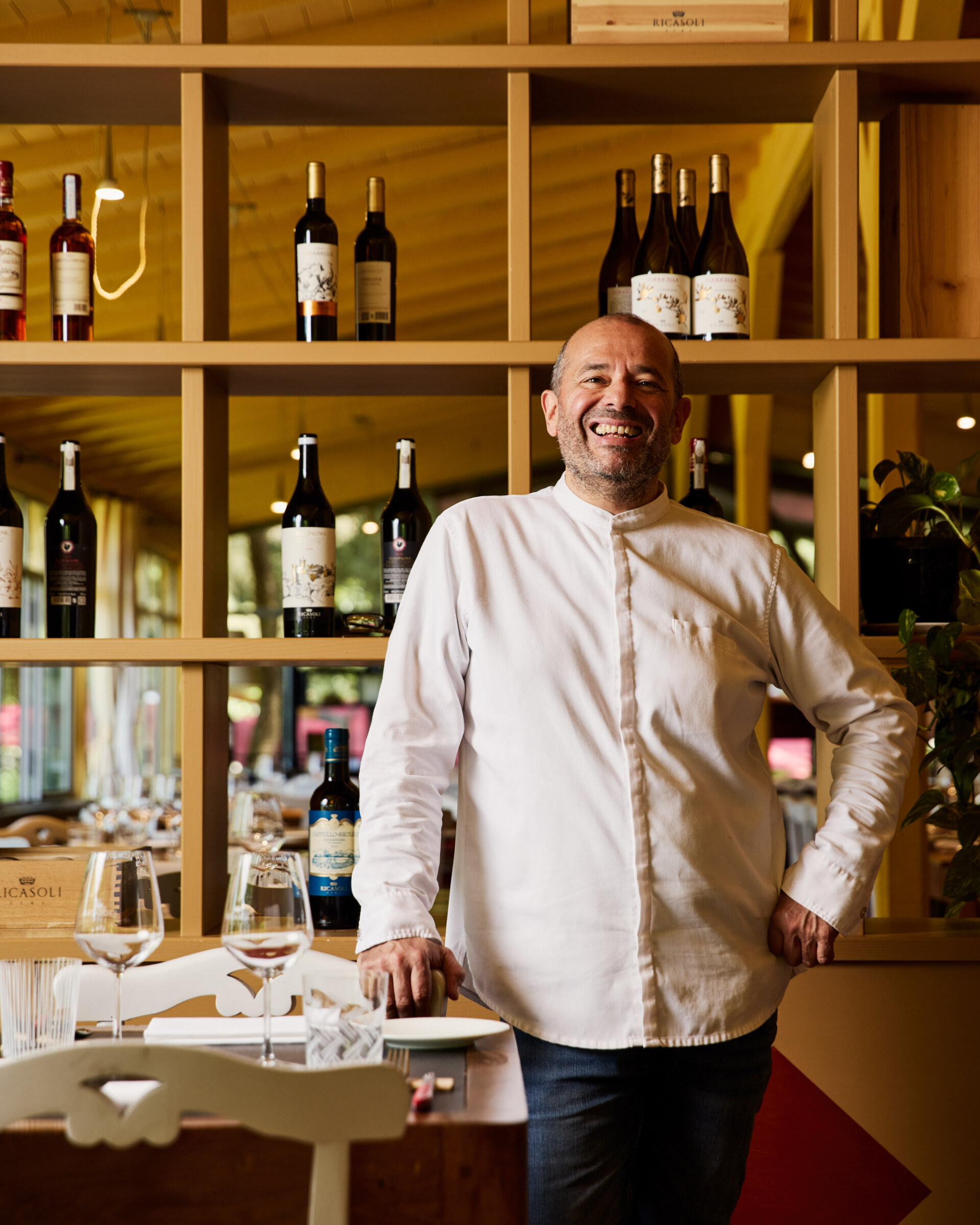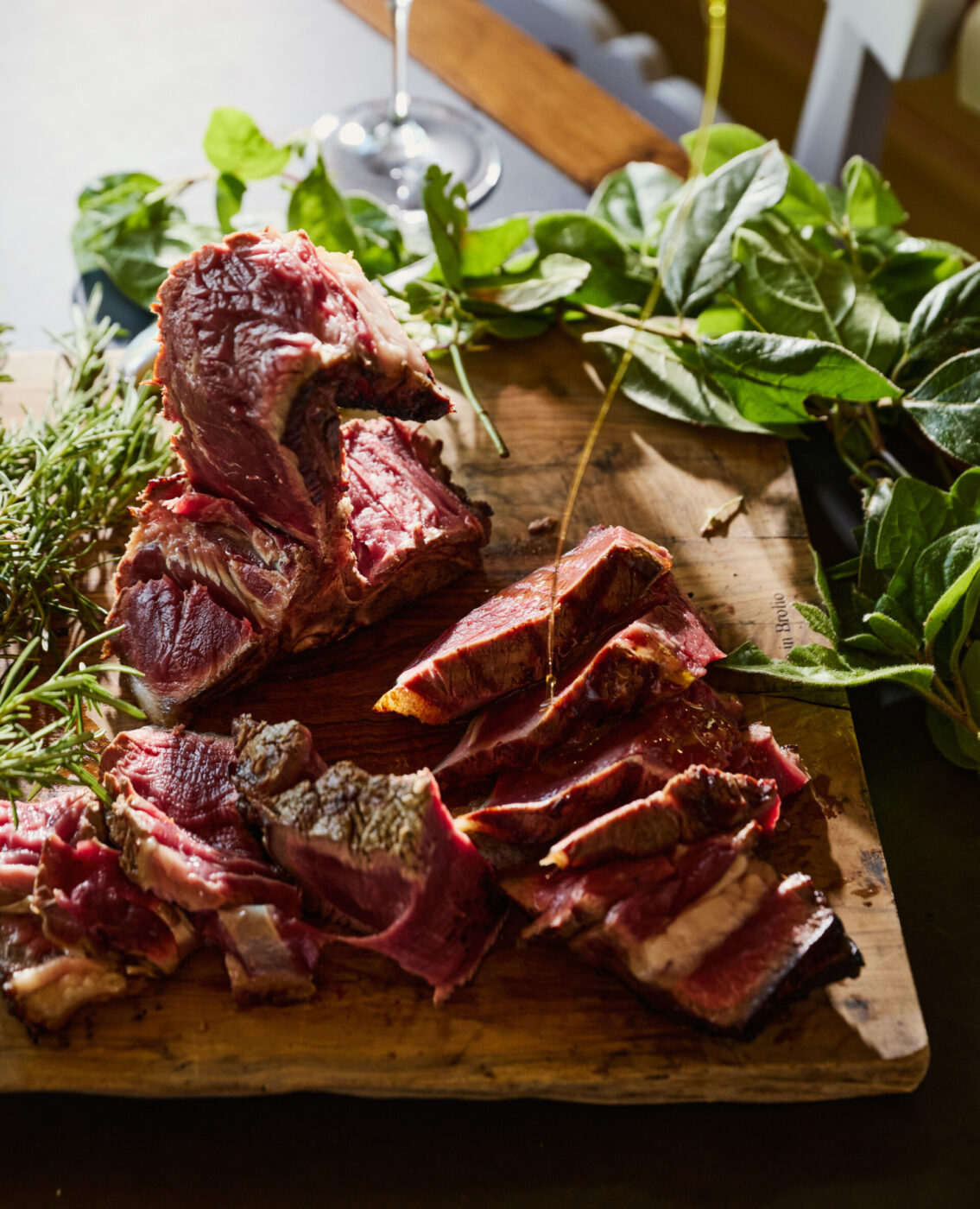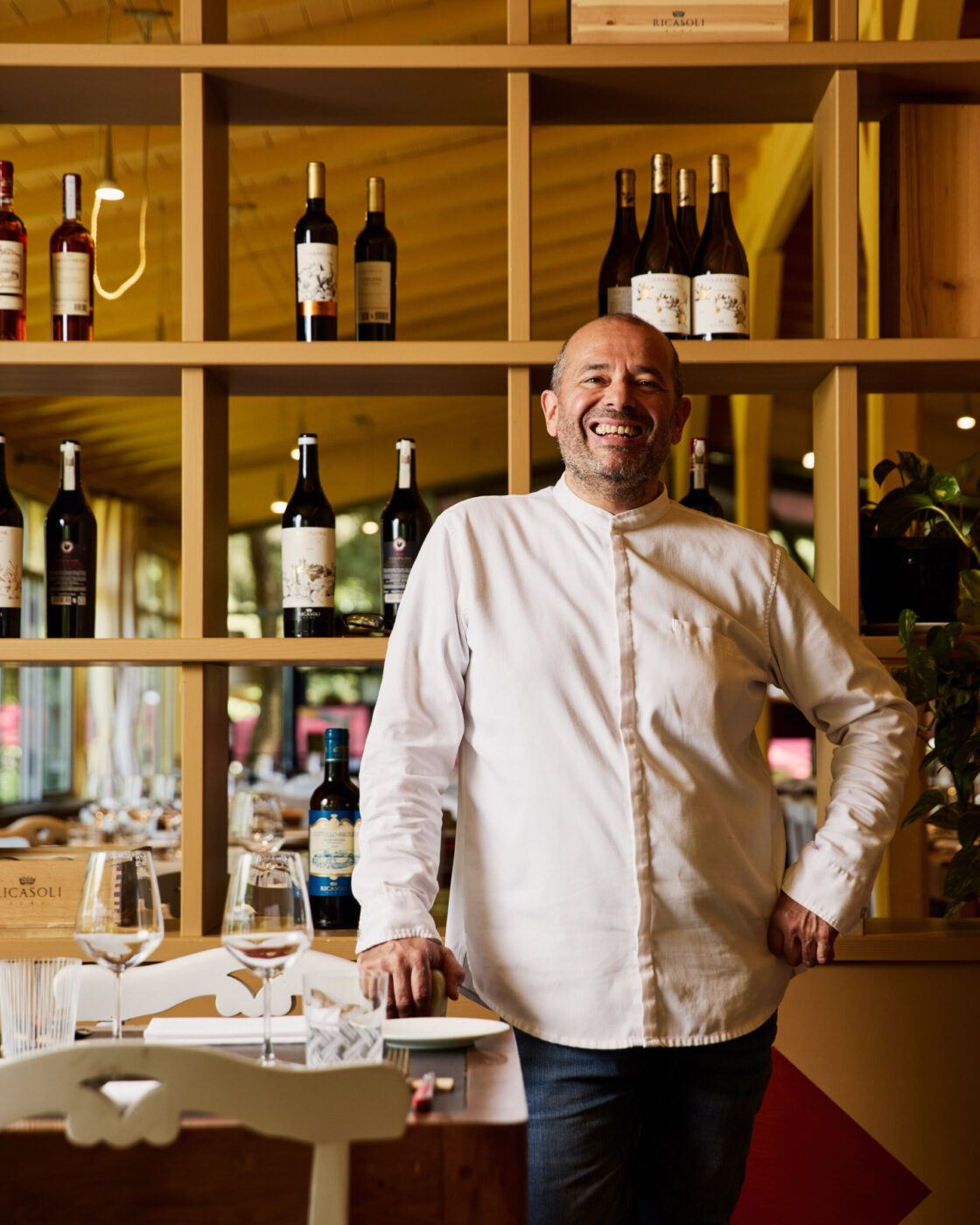Editor’s Note: The following comes from the pages of 20 Amici – 40 Ricette: Friends and Food from the Heart of Chianti, written by John Bersani, an Italian-American who’s been living in Gaiole-in-Chianti for the last 20+ years, and photographed by Nico Schinco (who’s also an Italy Segreta contributor!). “We came for the food, the wine, the culture, and the natural beauty. We’ve stayed because of the people,” writes Bersani of his small hilltop town. 20 Amici – 40 Ricette is dedicated as much to the former as it is to the latter, with the eponymous 40 recipes contributed by 20 Chianti locals, from top chefs to home cooks. The result is a mouth-watering cookbook that also reads as a rolodex of the heart-filled personaggi (characters) that call Chianti home. It will be published in 2025 by The Collective Book Studio.
The Castello di Brolio winery, in the heart of the Comune di Gaiole, is the birthplace of Chianti. The Ricasoli family has been making wine there for more than 400 years. Their ancestor and family patriarch–Barone Bettino Ricasoli–is widely credited with developing the blend of Sangiovese and other indigenous Tuscan grape varieties that became first, the preferred formula, and later, the legal standard by which Chianti wines were once made.
A visit to the Brolio property offers a chance to soak in the history of the Chianti Classico wine region with a tour of the family’s ancient castello and to sample the Ricasoli family’s impressive portfolio of wines in their tasting room. And if you’re in the know, it’s also a chance to sample some great local food at the property’s Osteria di Brolio.
The osteria’s heart, soul, and executive chef is a young Tuscan named Franco Sangiacomo. Born and raised in Colle di Val d’Elsa, Franco has spent time in prestigious kitchens both in Italy and the U.S., including the storied two-Michelin star Ristorante Arnolfo in his hometown. At Osteria di Brolio, Franco presents a refined, yet rustic, take on Tuscan classics in a comfortable, casual, and welcoming space.
Any visit to central Tuscany would feel incomplete without at least one meal centered around the region’s famous bistecca alla fiorentina. I think Franco’s version is one of Chianti’s best, offering both sirloin and tenderloin sections on the bone. The artisanally raised beef is sourced from local farmers and prepared simply, but carefully, in accordance with time-honored traditions.

FRANCO’S BISTECCA ALLA FIORENTINA
“La fiorentina” is by definition what we know as a porterhouse steak, but a great bone-in ribeye is a fine substitute if you can’t find a porterhouse or if your taste runs toward this well-marbled cut.
In Tuscany, the thought of serving a 16-ounce (455-g) steak to a single diner (as we do at steakhouses throughout the U.S.) would never occur to a right-minded chef. A typical fiorentina will weigh in at about 2.2 pounds (1 kg) and will be sliced tableside to serve four or five people.
The key to this iconic dish really is finding the right steak. True, some basic cooking technique and skill are required. But with the right raw material, all you really need to do is not mess things up. Find an artisanal butcher shop (or order online from one of the many great meat sources that ship all over the U.S.) and spend the extra dollars for prime dry-aged beef that’s been raised on a healthy diet. It will make all the difference in your fiorentina results.
Serves 4 or 5
INGREDIENTS
- 2 (16- to 18-ounce/455- to 500-g) prime dry-aged porterhouse steaks
- Kosher or coarse sea salt
- Freshly ground black pepper
- 2 sprigs rosemary
- High-quality extra virgin olive oil
- 1/2 lemon
PREPARATION
- Remove the steaks from your refrigerator at least 1 hour, and preferably 2 hours, before you plan to grill them so that they warm up to room temperature.
- Light a wood or charcoal fire in your outdoor grill (alternatively, you can use a gas grill preheated to high; or, if an outdoor grill is unavailable, preheat a ridged grill pan over high heat on your stovetop).
- Season the meat generously with salt on both sides.
- Grill the steaks over high heat to sear them and develop an initial crust on each side. Move the steaks to a cooler part of the grill (or lower the heat under your grill pan) and continue cooking, turning the steaks occasionally to ensure the meat cooks evenly. Your target is a medium-rare internal temperature, 8 to 9 minutes of total cooking time, depending on the heat of your fire and the thickness of your steaks. You could insert a meat thermometer into the steaks to check where things are at; for medium-rare, I would pull the steaks from the grill at an internal temperature of 128°F (53°C). If you don’t have a meat thermometer, you can use what I call the “touch test.” Simply press the steak with your forefinger. If it’s still quite “mushy,” it’s not done yet. You’re looking for some resistance, but not too much, when you touch the steak. “Flabby” or “mushy” equals underdone (unless you prefer your steak blood-red rare as the Tuscans actually do). Rock solid to the touch equals overdone. You’re after that beautiful middle ground where there’s just some resistance. Keep in mind, if grilling a porterhouse, that the filet side of the steak will cook faster than the sirloin, so try to keep it over a lower heat section of your cooking surface.
- Remove the steaks from the grill when they have reached the right internal temperature and allow them to rest on a cutting board for 5 minutes.
- Carve the meat off the bones and cut it into slices against the grain. Place the slices on a warmed serving platter, sprinkle with a bit more salt and 3 or 4 grinds of black pepper. Nestle the rosemary sprigs in among the steak slices so that their oils and fragrance will find their way into the flavor of the meat. Drizzle with olive oil and a few squeezes of fresh lemon juice. Serve immediately.


